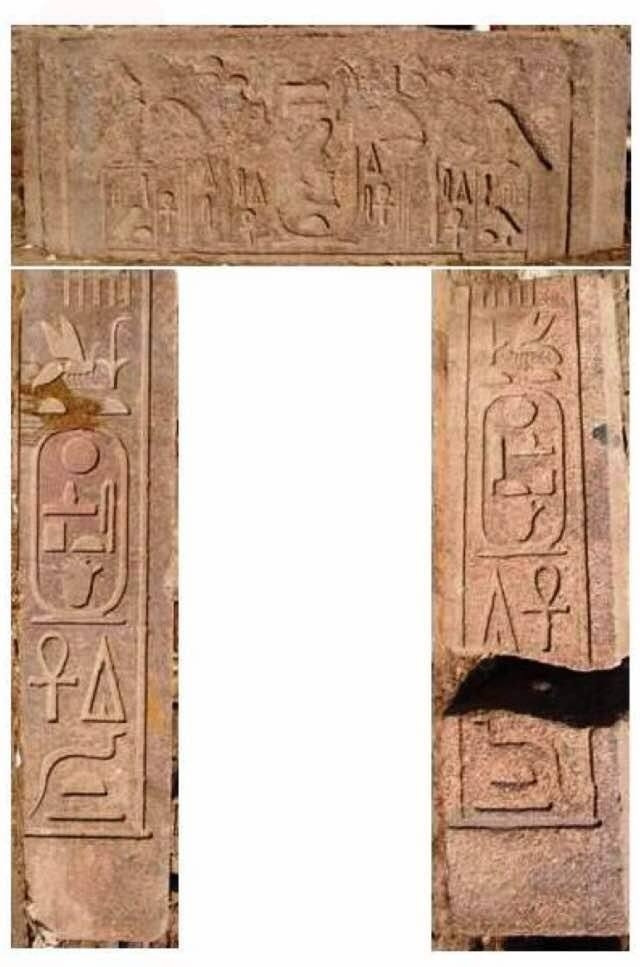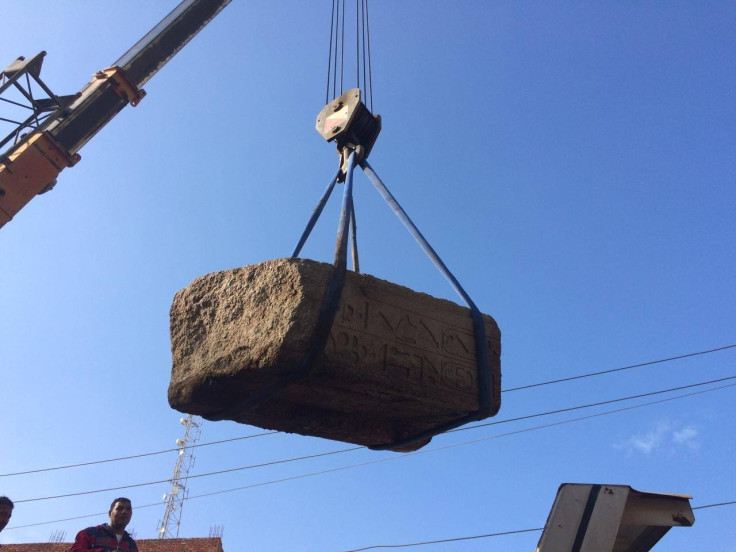3000-year-old 'pink' gate with hieroglyphs of King Amenemhat I finds a new home
The granite structure has been relocated to the Grand Egyptian Museum.

An ancient Egyptian gate has been removed from its original site in north Cairo and relocated to the Grand Egyptian Museum overlooking the Giza plateau. The Ministry of Antiquities announced plans to restore the historic structure which dates back around 3,000 years to the time of King Amenemhat I.
Made of pink granite, the gate features etchings which make reference to the pharaoh. The cartouches — carved hieroglyphs inside an oval, with a horizontal line at the end, typically refer to a royal, and in this case are of particular importance considering Amenemhat I was the first ruler of the Twelfth Dynasty of ancient Egypt.
According to Mostafa Amin, Secretary General of the Supreme Council of Antiquities, the six-tonne gate will undergo restoration before being put on display at the yet-to-be-opened museum in 2018. It will be part of a collection of over a 1,000 artefacts including the tomb of King Tutankhamun.
Issa Zidane, the director general of the early restoration at the Egyptian Grand Museum, who was in charge of the transfer of the portal, said special measures were taken to ensure the safe transport of the relic.
King Amenemhat I heralded the golden age of the Middle Kingdom of Egypt and ruled the ancient civilisation from 1991 BC to 1962 BC.
Scientists strongly believe that he was not of royal blood, but a vizier to his predecessor, Mentuhotep IV. According to records, Amenemhet moved the capital from Thebes to Itj-tawy (near modern Al-Lisht). In order to safeguard the Nile River delta, he built fortresses along the eastern and western frontiers.
Whether to prove the legitimacy of his rule, or to create a link between the old and new dynasties, the pharaoh built his pyramid and adjoining funerary complex at Al-Lisht, along the lines of those of the late Old Kingdom (c. 2575–c. 2130 BCE).

The Grand Egyptian Museum
The Grand Egyptian Museum (GEM) is a major project by the Egyptian government to revive the country's tourism. Also known as the Giza Museum, the structure is spread over 50 hectares (120 acres) of land and is expected to be the largest archaeological museum in the world. It overlooks the Giza Plateau and is approximately 2kms from the Giza pyramids.
Designed by Heneghan Peng Architects, Buro Happold and Arup, the building is shaped like a chamfered triangle. Construction on the ambitious project began in 2002 and was expected to be completed by 2015. However, due to delays in construction and growing expenses, only a portion of the museum is expected to open in 2018.
According to the Supreme Council of Antiquities, the site will house over 100,000 relics from ancient Egypt including King Tutankhamun's treasures, pharaoh busts and rare hieroglyphic scrolls.






















